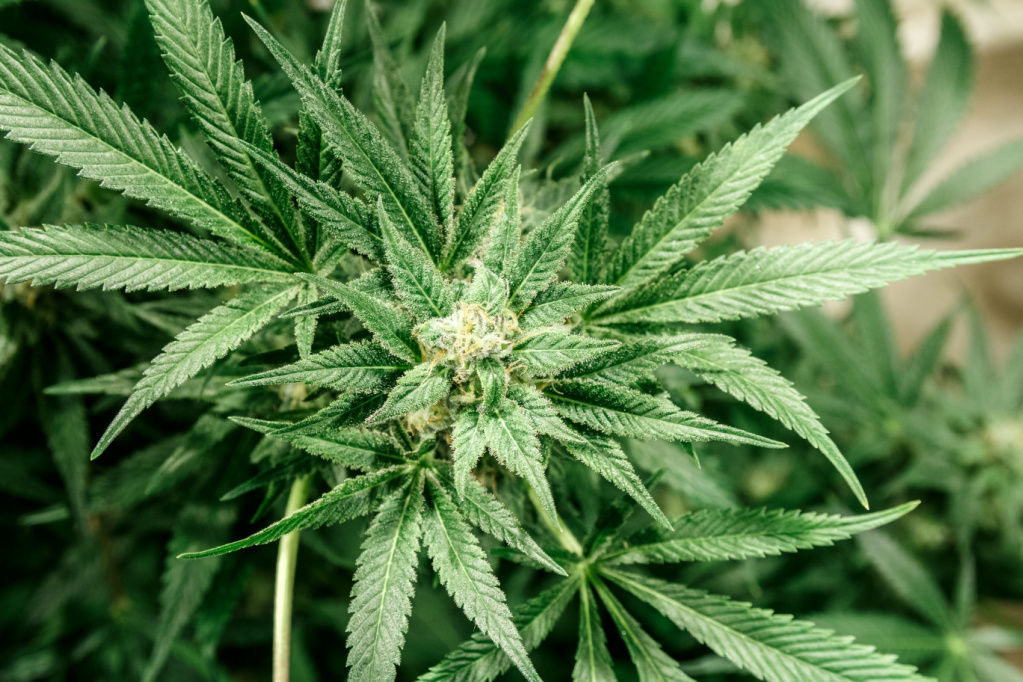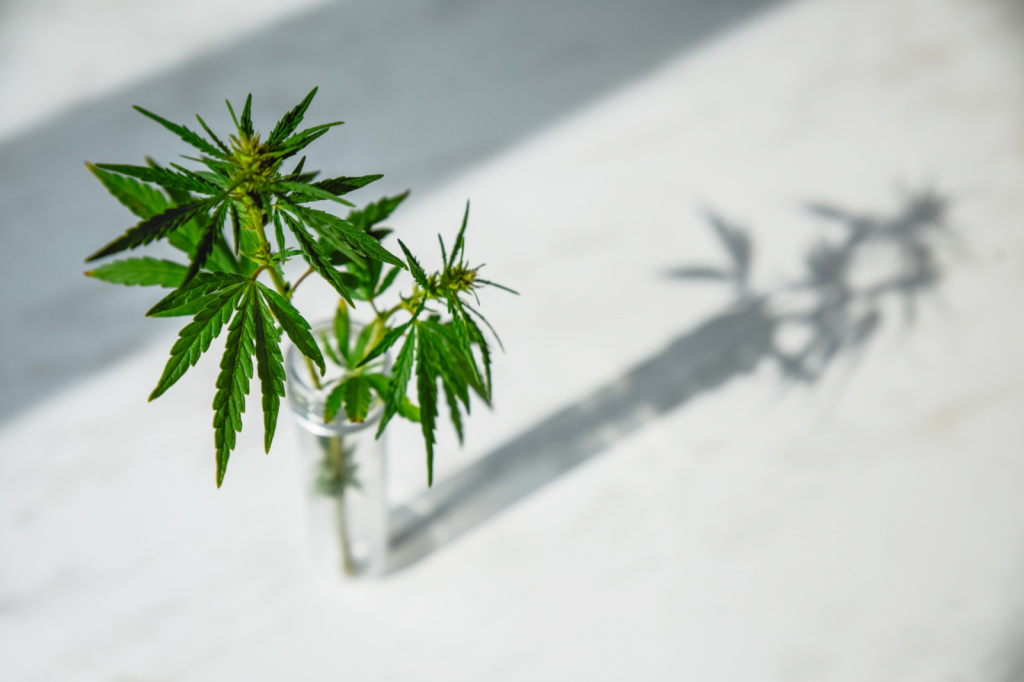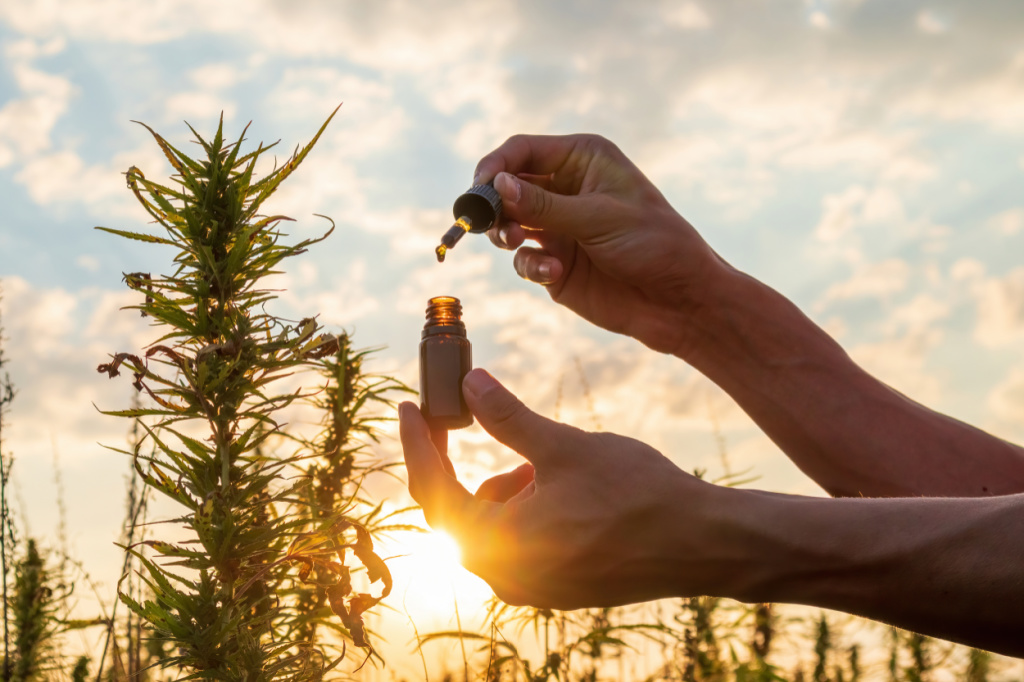
From its delightful euphoria to its rejuvenating therapeutic benefits, the cannabis plant is best known for the wide range of effects it produces. We can thank cannabinoids such as THC and CBD for the central role in producing these effects, but just how do they do it? By interacting with the endocannabinoid system present inside our bodies, that’s how.
Just what is the endocannabinoid system? What does the endocannabinoid system do? And perhaps most importantly, what does it all have to do with cannabis? Here’s what you need to know.

Cannabis has a complex and profound influence on the human body. The cannabis plant affects our minds and bodies through mechanisms that researchers are still working hard to understand.
One thing that’s known for sure is that cannabis primarily produces its effects by interacting with certain cell receptors in our bodies. These receptors have been grouped together into a system known as the endogenous cannabinoid system, also called the endocannabinoid system (ECS).
What is the endocannabinoid system? It is a physiological network of cell receptors spread throughout the body and brain, embedded in our cell membranes. We recommend you get to know the CB1 and CB2 receptors. While the CB1 receptors of the ECS are predominantly present in connective tissues, the nervous system, organs, gonads, and glands, CB2 receptors are predominantly present in the immune system and its associated structures.
This cool thing about the ECS is that it’s not unique to human beings. In fact, it’s believed that all vertebrates possess this incredible network.
What’s the point of all these receptors residing in our bodies? In other words, what does the endocannabinoid system do?
The ECS works to keep things in balance (homeostasis) throughout the body. The ECS maintains homeostasis at the cellular level and beyond. At a zoomed-in level, endocannabinoids can be found at injury sites where they interact with nerve cells and immune cells. Another example is autophagy, a cellular recycling process for which the ECS is believed to be responsible.
At a higher level, it’s believed that the ECS is responsible for modulating several critical human functions including appetite, sleep, pain, stress, immune function, pain, memory, digestion, body temperature, inflammation, motor function, cardiovascular system function, and more.

On their own, these cell receptors don’t do much, but when combined with endocannabinoids and phytocannabinoids, they are capable of exerting incredible activity throughout our nervous system, immune system, and all of the body’s organs.
Endocannabinoids are lipid-based neurotransmitters that interact directly with these ECS receptors. They get their name from the fact that they are similar to cannabinoids, but are endogenously (naturally) produced by the body. The two best-known endocannabinoids are 2–arachidonoylglycerol (2–AG) and anandamide (AEA).
Head spinning? It’s like the endocannabinoid is the car and the receptor is the biodiesel tank. What does the endocannabinoid system do with these endocannabinoids? It uses these molecules to stimulate ECS cell receptors, telling them it’s Go time. They are produced on-demand from cell membrane arachidonic acid derivatives to have localized effect. After these two endocannabinoids finish their work, they are broken down by enzymes and recycled.
The importance of endocannabinoids to the functioning of the endocannabinoid system cannot be overstated. What is the endocannabinoid system capable of without the signaling neurotransmitters that piece it together? Not much.
But endocannabinoids aren’t the only types of cannabinoids that work with the ECS. Cannabis-based cannabinoids, the most commonly known being THC and CBD, are known as ‘phytocannabinoids’, also interact with the ECS in similar ways. Research demonstrates a clear link between the endocannabinoid system and CBD/THC processing.
Phytocannabinoids appear to be another way to stimulate the ECS and help modulate the many functions of the central nervous system. This would explain why certain cannabinoids are believed to have anti-inflammatory, analgesic, anxiolytic, sedating, and appetite-stimulating properties.
Each phytocannabinoid seems to interact with ECS receptors in different ways, potentially as a result of their different molecular structures. For example, THC is known to bind directly to CB1 and CB2 receptors, potentially because it has a molecular structure that is so similar to that of anandamide. CBD, however, has very little binding affinity for these receptors and is believed to work through mechanisms other than direct binding.
What’s the deal with the endocannabinoid system and CBD? Although CBD can’t bind to CB1 and CB2 receptors in the same way that THC can, that doesn’t mean that it doesn’t affect the cell receptors in the body.
For starters, research has indicated that CBD reduces the binding affinity of THC to ECS receptors by changing the shape of these receptors. This may explain why ingesting THC and CBD together generally results in a less intoxicating and more toned-down THC buzz.
Another link between the endocannabinoid system and CBD exists in how CBD may affect the function of endocannabinoids. Researchers believe that CBD may act as a reuptake inhibitor that inhibits the breakdown of endocannabinoids like anandamide.
CBD’s abilities as a reuptake inhibitor means that it may actually slow down the enzyme breakdown process, allowing these endocannabinoids to stick around for longer, and potentially extending the length of their activity and effects.

When it comes to this cannabinoid, it’s not all about the endocannabinoid system and CBD. Although CB1 and CB2 receptors are considered to be the primary receptors of the endocannabinoid system, there appears to be some overlap in activity between cannabinoids and other kinds of receptors in the body.
One example is TRP (Transient receptor potential channel) receptors. CBD may interact directly with TRPV1 (vanilloid type) channels that are believed to influence pain perception. This activity would explain why so many people find that CBD is able to provide them with a degree of pain relief. Furthermore, CBD research indicates it’s role in modulating 5-HT1A receptors, GPR55 receptors (also considered to be ECS receptors), and potentially also PPAR receptors.
Many researchers believe that our current knowledge of the endocannabinoid system is just the tip of the iceberg. The reality is that we have just begun to scratch the surface when it comes to questions like ‘What is the endocannabinoid system?’ and ‘What does the endocannabinoid system do?’.
As cannabis becomes more mainstream, and more accepted as a medicinal drug, cannabis research is gaining traction and moving forward at a faster pace than ever before. Who knows what the future holds for this incredible plant that just decades ago was seen as nothing more than a recreational plaything.
Ready to see how THC and CBD works its magic with your endocannabinoid system? Browse selection of flower (we even have delivery!) today. Or drop by the store to see what our talented budtenders recommend for your ailments or recreational interests.
Open Daily: 9am - 8pm






ACKNOWLEDGMENT OF CALIFORNIA LAW. You expressly acknowledge that Abide services are for qualified patients under California Health & Safety Code Section 11362.5, 11362.7, et seq., and a physician has recommended the use of medical marijuana. You also expressly acknowledge that the use, possession, cultivation, transportation and distribution of cannabis is illegal in California unless all participants are acting completely within the scope of California’s medical cannabis laws as set forth in the Attorney General’s Guidelines for the Security and Non-Diversion of Marijuana Grown for Medical Use and the Medical Cannabis Regulation & Safety Act (consisting of AB243, AB266 and SB643) and any amendments thereto.